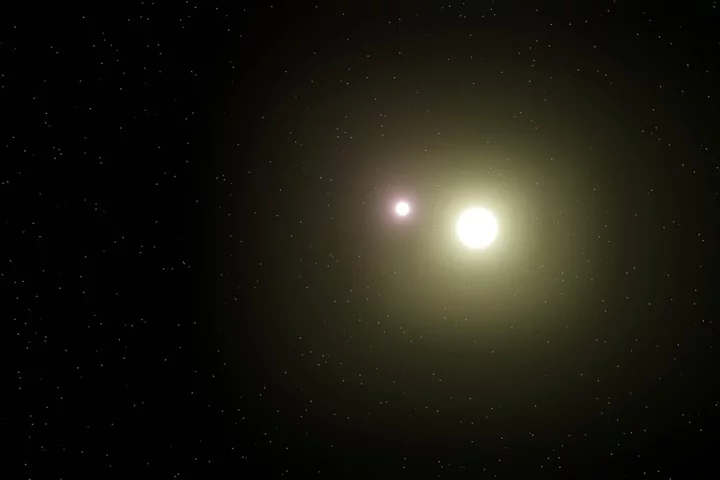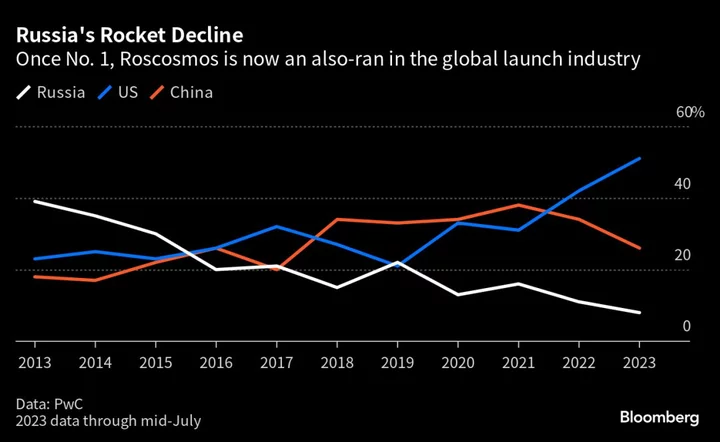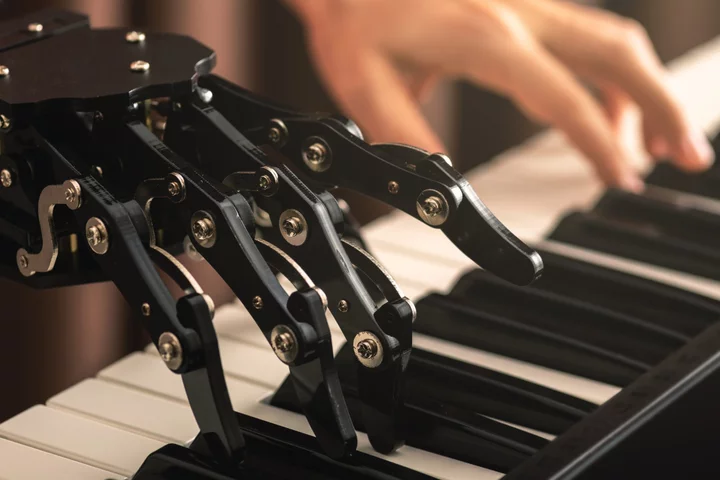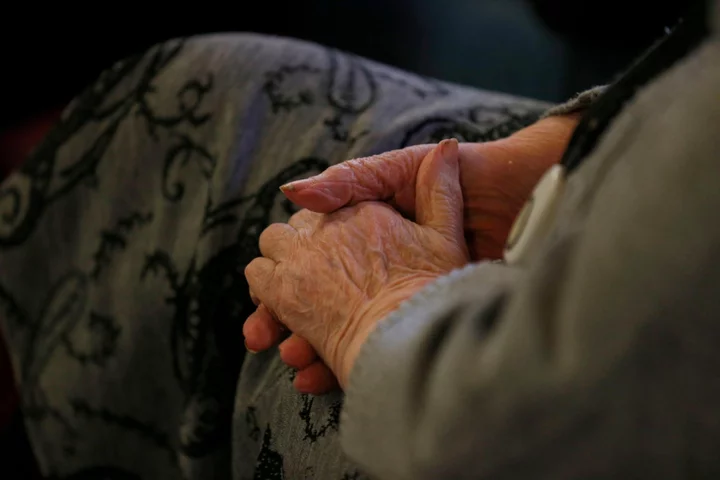
That's a spicy meatball: Musk's tweet about Zuck fight sparks hilarious Italian-inspired memes
Elon Musk posted on FKA Twitter Friday about his proposed fight with Mark Zuckerberg —
2023-08-12 01:29

Foundations seek to advance AI for good — and also protect the world from its threats
While technology experts sound the alarm on the pace of artificial intelligence development, philanthropists — including long-established foundations and tech billionaires — have been responding with an uptick in grants
2023-08-11 23:54

Keith David cast as Commander Zavala in ‘Destiny 2’ after Lance Reddick’s death
Following Lance Reddick’s death in March, Keith David has been cast to replace the actor by playing Commander Zavala in ‘Destiny 2’.
2023-08-11 21:26

Florida education commissioner skips forum on criticized Black history standards
Lawmakers, teachers, school board members and parents crowded into a South Florida church for a forum on the state's new standards for teaching Black history
2023-08-11 20:22

Astronomer uncovers ‘direct evidence’ of gravity breaking down in the universe
A scientist claims to have discovered a “gravitational anomaly” that calls into question our fundamental understanding of the universe. Astronomer Kyu-Hyun Chae from the university of Sejong University in South Korea made the discovery while studying binary star systems, which refer to two stars that orbit each other. His observations appear to go against the standard gravitational models established by Isaac Newton and Albert Einstein, and instead offer evidence that an alternative theory first proposed in the 1980s may explain the anomaly. Analysis of data collected by the European Space Agency’s Gaia space telescope revealed accelerations of stars in binaries that did not fit the standard gravitational models. At accelerations of lower than 0.1 nanometres per second squared, the orbit of the two stars deviated from Newton’s universal law of gravitation and Einstein’s general relativity. Instead, Professor Chae theorised that a model known as Modified Newtonian Dynamics (MOND) could explain why these previous theoretical frameworks were unable to explain the stars’ movements. “The deviation represents a direct evidence for the breakdown of standard gravity at weak acceleration,” Professor Chae wrote in a paper, titled ‘Breakdown of the Newton-Einstein standard gravity at low acceleration in internal dynamics of wide binary stars’, that was published in The Astrophysics Journal.. His research calls into question the existence of dark matter and other peculiar space phenomena that are typically used to justify irregularities with Newton-Einstein standards. “The data reveal an unambiguous and extremely strong signature of the breakdown of the standard Newton-Einstein gravity at weak acceleration,” the study concluded. “What is even more surprising is that the trend and magnitude of the gravitational anomaly agree with what the AQUAL [MOND] theory predicts.” Professor Chae predicts that his results will be confirmed and refined with larger data sets in the future, which could lead to a new revolution in physics. “Chae’s finding is a result of a very involved analysis of cutting-edge data, which, as far as I can judge, he has performed very meticulously and carefully,” said theoretical physicist Mordehai Milgrom at the Weizmann Institute in Israel, who first proposed the MOND model 40 years ago. “But for such a far-reaching finding – and it is indeed very far-reaching – we require confirmation by independent analyses, preferably with better future data. “If this anomaly is confirmed as a breakdown of Newtonian dynamics, and especially if it indeed agrees with the most straightforward predictions of MOND, it will have enormous implications for astrophysics, cosmology, and for fundamental physics at large.” Pavel Kroupa, professor at Charles University in Prague, added: “The implications for all of astrophysics are immense.” Read More Perseids 2023: Meteor beacon offers unique way to observe spectacular shower over UK Slack announces its biggest ever update Why you might never have to remember your password again AI can predict Parkinson’s subtype with up to 95% accuracy, study suggests
2023-08-11 15:52

Microsoft’s Role in Email Breach to Be Part of US Cyber Inquiry
A US cybersecurity advisory panel will investigate risks in cloud computing, including Microsoft Corp.’s role in a recent
2023-08-11 09:20

Biden Wishes His Signature Climate Law Was Called Something Else
President Joe Biden said he regretted the name of one of his signature legislative achievements — the Inflation
2023-08-11 08:27

Biden administration defends communications with social media companies in high-stakes court fight
The Biden administration on Thursday defended its communications with social media giants in court, arguing those channels must stay open so that the federal government can help protect the public from threats to election security, Covid-19 misinformation and other dangers.
2023-08-11 07:18

Russia Seeks to Return to the Moon After Almost 50-Year Break
Russia is set to return to the moon after nearly 50 years by sending an uncrewed lander toward
2023-08-11 01:55

X chief Yaccarino claims renamed Twitter 'close' to break-even
Linda Yaccarino, CEO of social media platform X, said Thursday that the company formerly known as Twitter is "close" to breaking even and is hiring to beef up a...
2023-08-11 01:52

Google and Universal Music might license artists' voices for AI-generated music
Google and Universal Music Group (UMG) are reportedly working on a partnership to license artists'
2023-08-11 00:27

AI can predict Parkinson’s subtype with up to 95% accuracy, study suggests
Scientists have developed an artificial intelligence (AI) tool that can classify four subtypes of Parkinson’s disease with up to 95% accuracy. Researchers from the Francis Crick Institute and the UCL Queen Square Institute of Neurology in London “trained” a computer program to recognise the subtypes of the condition using images of stem cells from patients. The team said their work, published in the journal Nature Machine Intelligence, could pave the way for personalised medicine and targeted drug discovery. Sonia Gandhi, assistant research director and group leader of the Neurodegeneration Biology Laboratory at the Crick, said: “We understand many of the processes that are causing Parkinson’s in people’s brains. The hope is that one day this could lead to fundamental changes in how we deliver personalised medicine Sonia Gandhi, Francis Crick Institute “But, while they are alive, we have no way of knowing which mechanism is happening, and therefore can’t give precise treatments. “We don’t currently have treatments which make a huge difference in the progression of Parkinson’s disease. “Using a model of the patient’s own neurons, and combining this with large numbers of images, we generated an algorithm to classify certain subtypes – a powerful approach that could open the door to identifying disease subtypes in life. “Taking this one step further, our platform would allow us to first test drugs in stem cell models, and predict whether a patient’s brain cells would be likely to respond to a drug, before enrolling into clinical trials. “The hope is that one day this could lead to fundamental changes in how we deliver personalised medicine.” Parkinson’s is a condition in which parts of the brain become progressively damaged over many years. Symptoms include involuntary shaking of particular parts of the body, slow movement, and stiff and inflexible muscles. But there is also a wide range of other physical and psychological symptoms such as depression and anxiety, problems sleeping, and memory problems. These vary from person to person due to differences in the underlying mechanisms causing the disease. The researchers said that until now, there was no way to accurately differentiate Parkinson’s subtypes. It means people are given nonspecific diagnoses and do not always have access to targeted treatments, support or care, the team added. For the study, the researchers generated stem cells, which have the ability to develop into specialised cell types in the body, from patients’ own cells. The team then used those cells to chemically create four different subtypes of Parkinson’s: two involving pathways leading to toxic build-up of a protein called alpha-synuclein and two involving pathways associated with dysfunctional mitochondria, the cell’s battery packs. Working with the British technology company Faculty AI, the team developed machine-learning algorithms which were able to accurately predict the Parkinson’s subtype when presented with images it had not seen before. James Evans, a PhD student at the Crick and UCL, and first co-author of the study, said: “Now that we use more advanced image techniques, we generate vast quantities of data, much of which is discarded when we manually select a few features of interest. “Using AI in this study enabled us to evaluate a larger number of cell features, and assess the importance of these features in discerning (the) disease subtype. “Using deep learning, we were able to extract much more information from our images than with conventional image analysis. “We now hope to expand this approach to understand how these cellular mechanisms contribute to other subtypes of Parkinson’s.” Read More Charity boss speaks out over ‘traumatic’ encounter with royal aide Ukraine war’s heaviest fight rages in east - follow live Oxford scientists find no evidence to suggest Facebook not good for wellbeing Many adults would struggle to understand video-sharing platforms’ rules – Ofcom Ozzy Osbourne PlayStation tweet which failed to reveal link to Sony banned
2023-08-10 23:18
